Bread Machine Honey Whole Wheat English Muffins (+ Video)
Sneak Peak: Mix and knead these wholesome Honey Whole Wheat English Muffins in a bread machine, then shape them into balls, flatten, brown, and bake. They make great sandwich buns for any meal–not just breakfast!
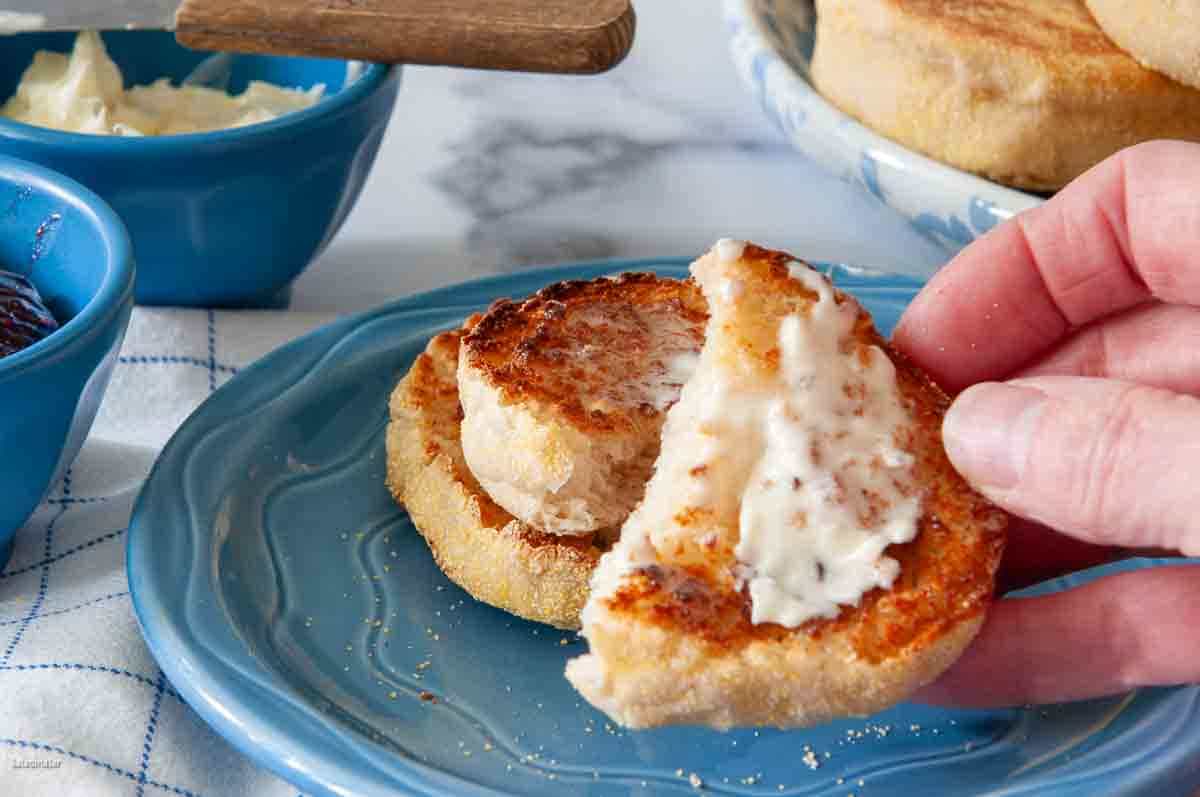
As an Amazon Associate, I earn from qualifying purchases.
I resisted making English muffins for years because I thought they were too much trouble. I didn’t want to use an empty tuna can, and on top of that, we rarely ate breakfast.
Now, I’ve created a simple and wholesome recipe mixed in a bread machine (paid link) that doesn’t require rolling out the dough, empty tuna cans, or a special cutter. My method involves shaping the dough into balls like dinner rolls. Flattening the dough balls will hide most imperfections if making a perfect ball seems impossible. (See the video for help.)
Furthermore, I’ve discovered that English muffins are as tasty in the evening for making bacon and tomato sandwiches as they are in the morning with eggs, sausage patties, and cheese.
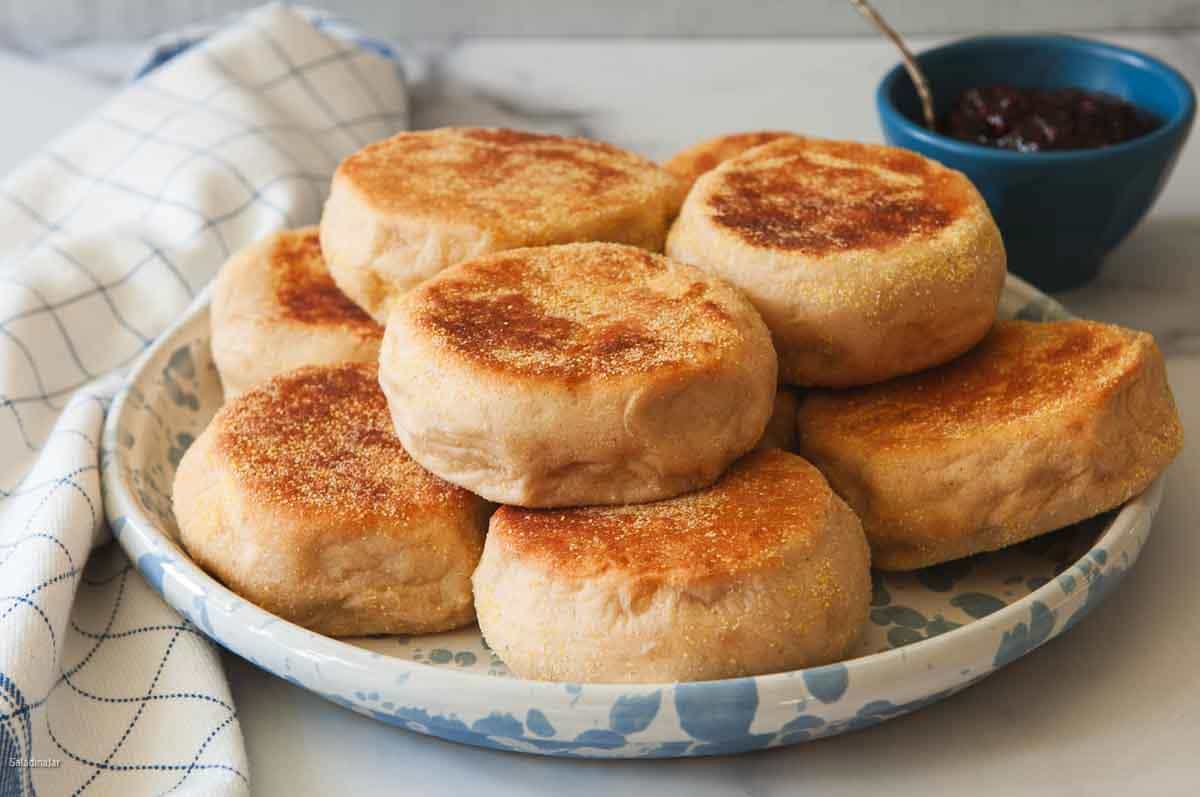
Ingredients and Substitutions
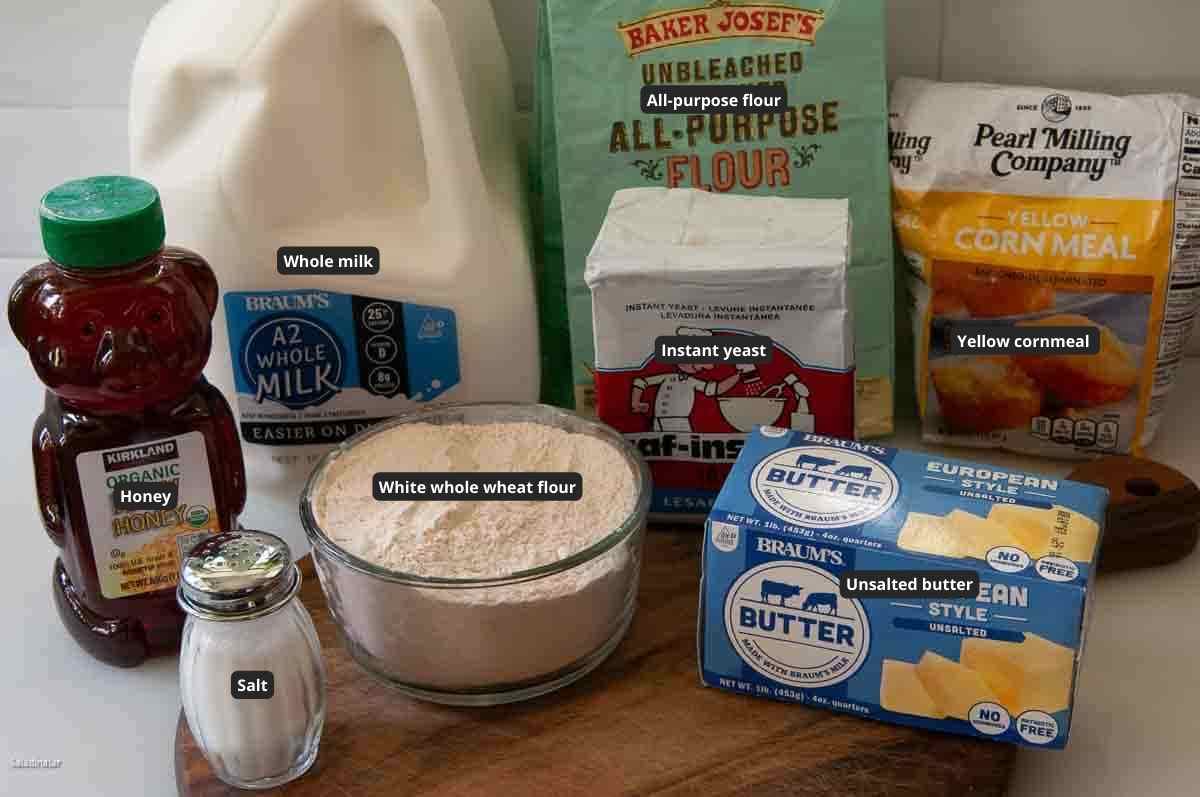
- MILK: Whole milk is best, but lower-fat milk will also work. Half milk and half water is another option. The milk does not need to be warmed.
- HONEY: Cut the amount in half if you prefer less sweetness.
- SALT: Use a table or sea salt. If you use Kosher salt, add a quarter teaspoon more.
- BUTTER: I use unsalted butter. If you only have salted butter, reduce the salt by a quarter-teaspoon.
- WHOLE WHEAT FLOUR: White whole wheat flour is my first choice, followed by whole wheat flour made with red wheat berries (easier to find at the grocery store).
- ALL-PURPOSE UNBLEACHED FLOUR: All-purpose flour makes a softer English muffin. Substitute bread flour for sturdier and chewier bread.
- YEAST: Instant yeast is always my first choice, especially when using a bread machine. No dissolving is necessary, and instant yeast takes off faster. If necessary, substitute active dry yeast and follow the package directions.
- CORNMEAL: I used yellow cornmeal during testing, but white cornmeal or semolina will also work.
How To Make the Dough for Bread Machine English Muffins
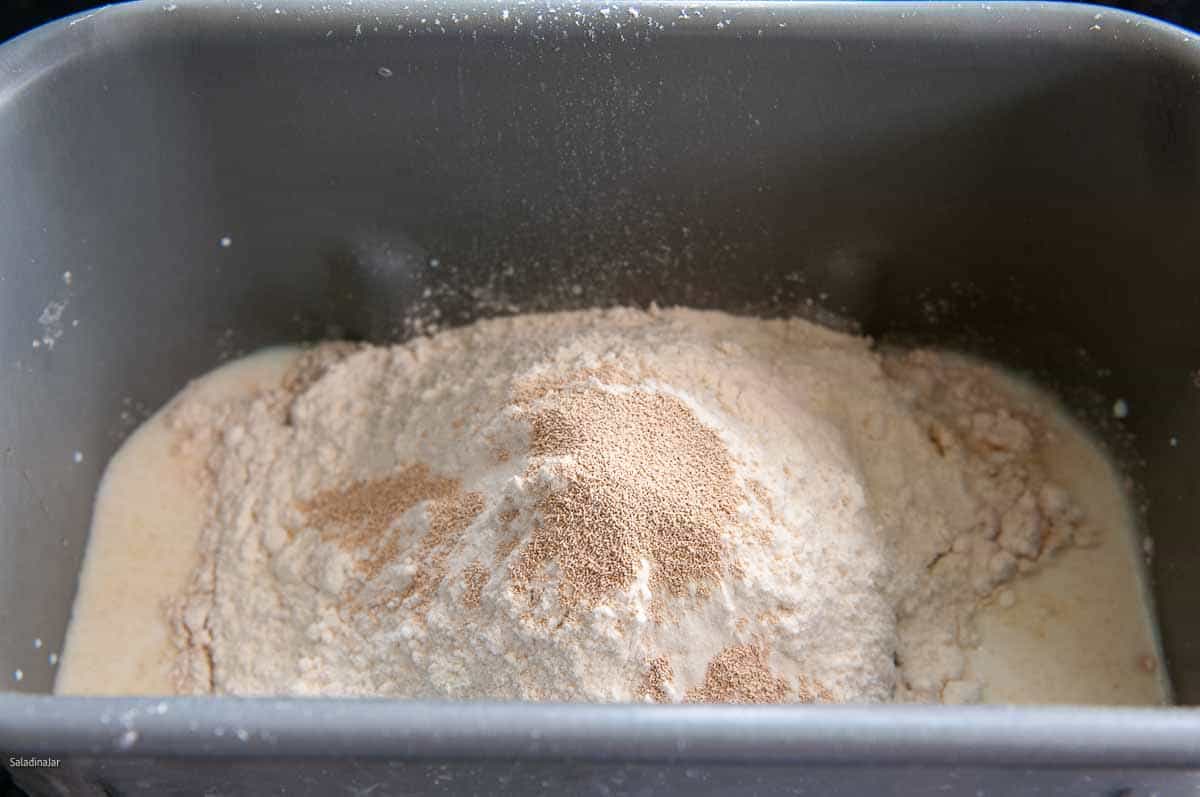
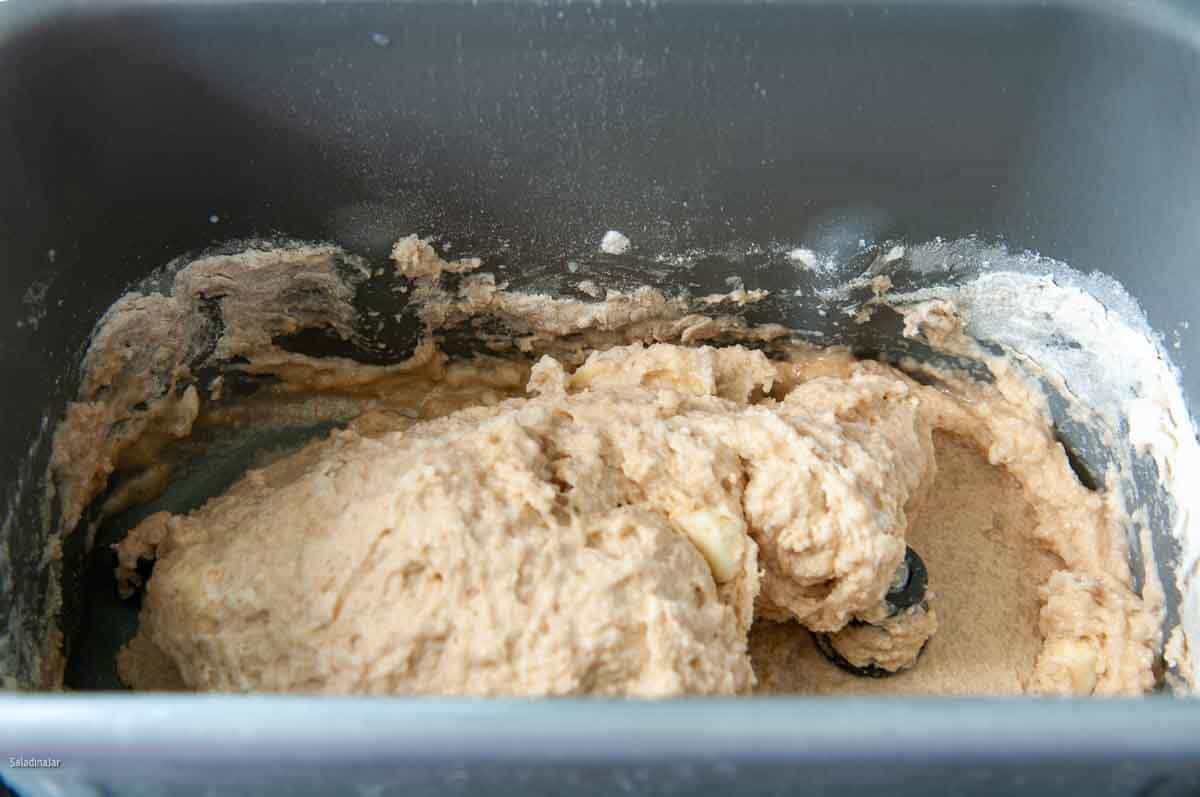
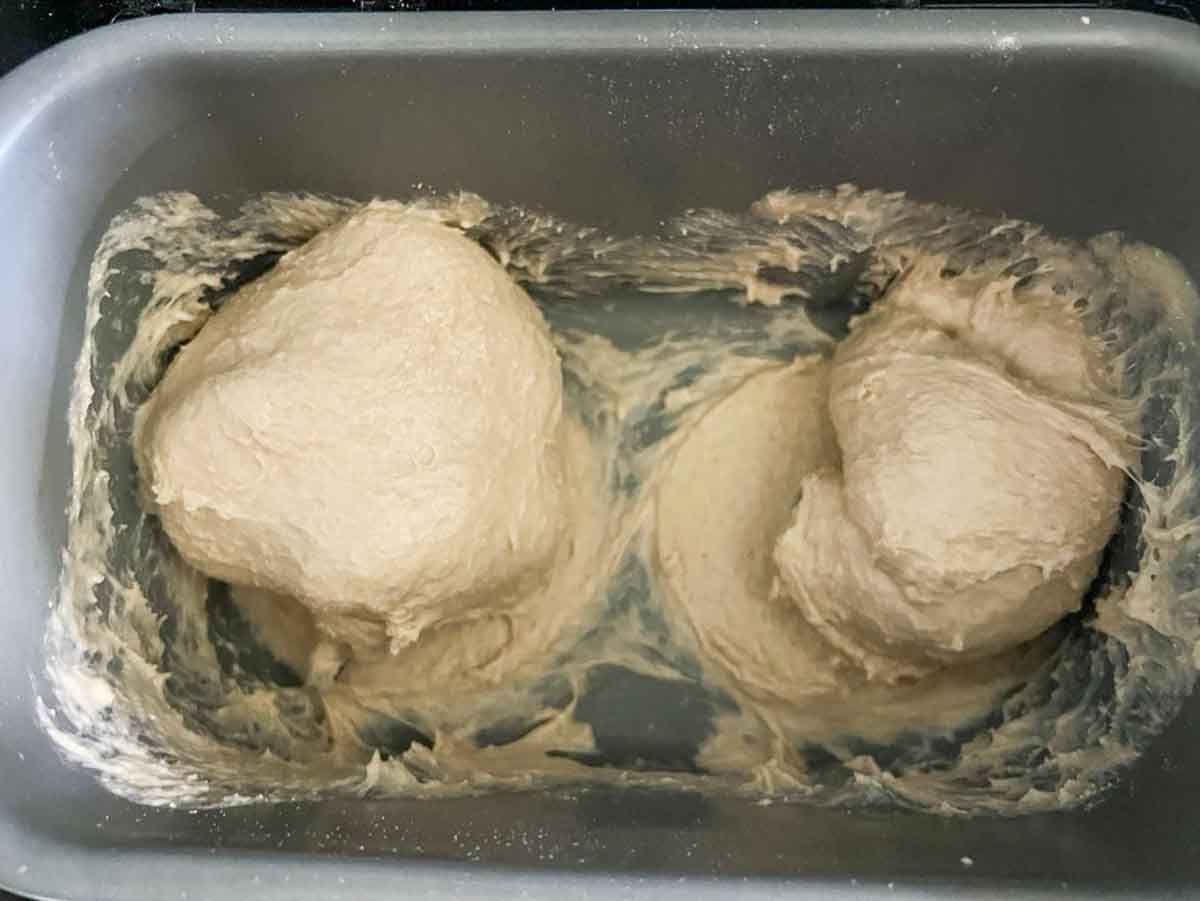
The dough is intentionally high in hydration, resulting in a texture with airy holes that capture butter and providing a delightful crunch when toasted. While it may be sticky, refrain from adding too much flour.
📌Kitchen Tip📌
Try using water on your hands instead of flour when working with sticky dough. I keep a small spray bottle handy. A bowl of water also works.
Shaping and Baking English Muffins
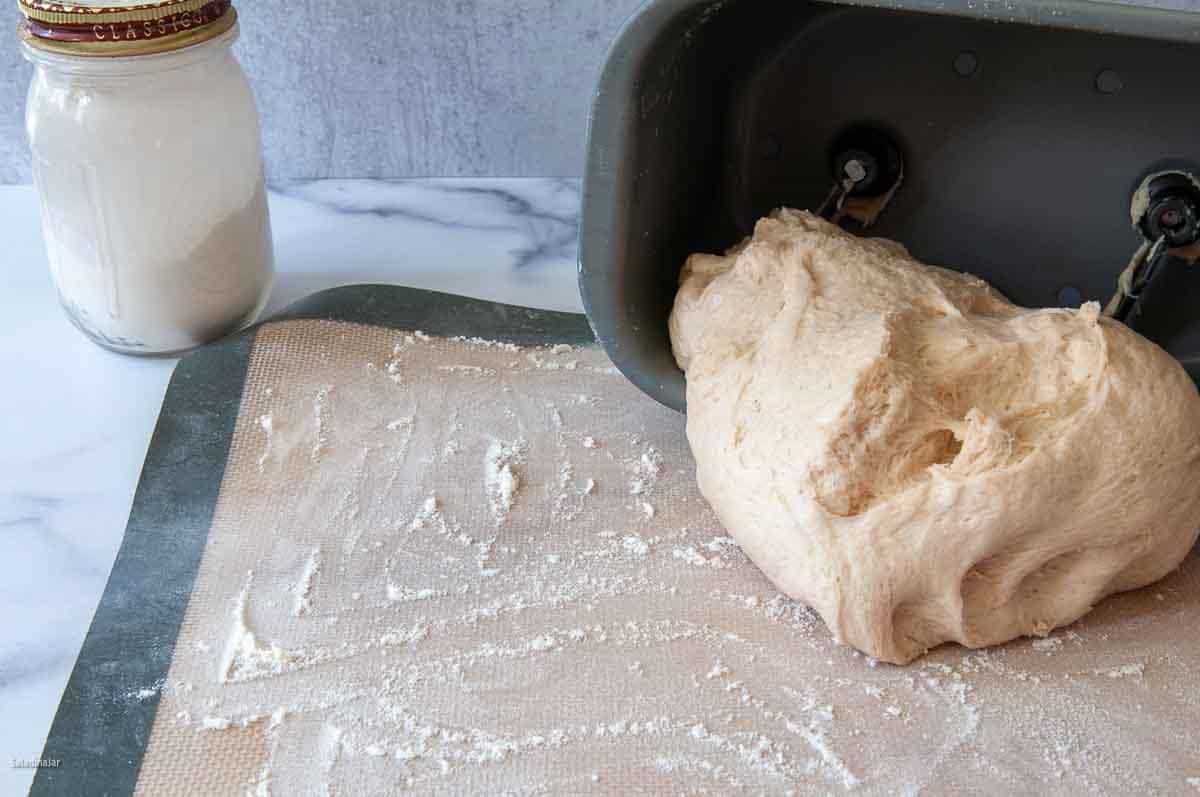
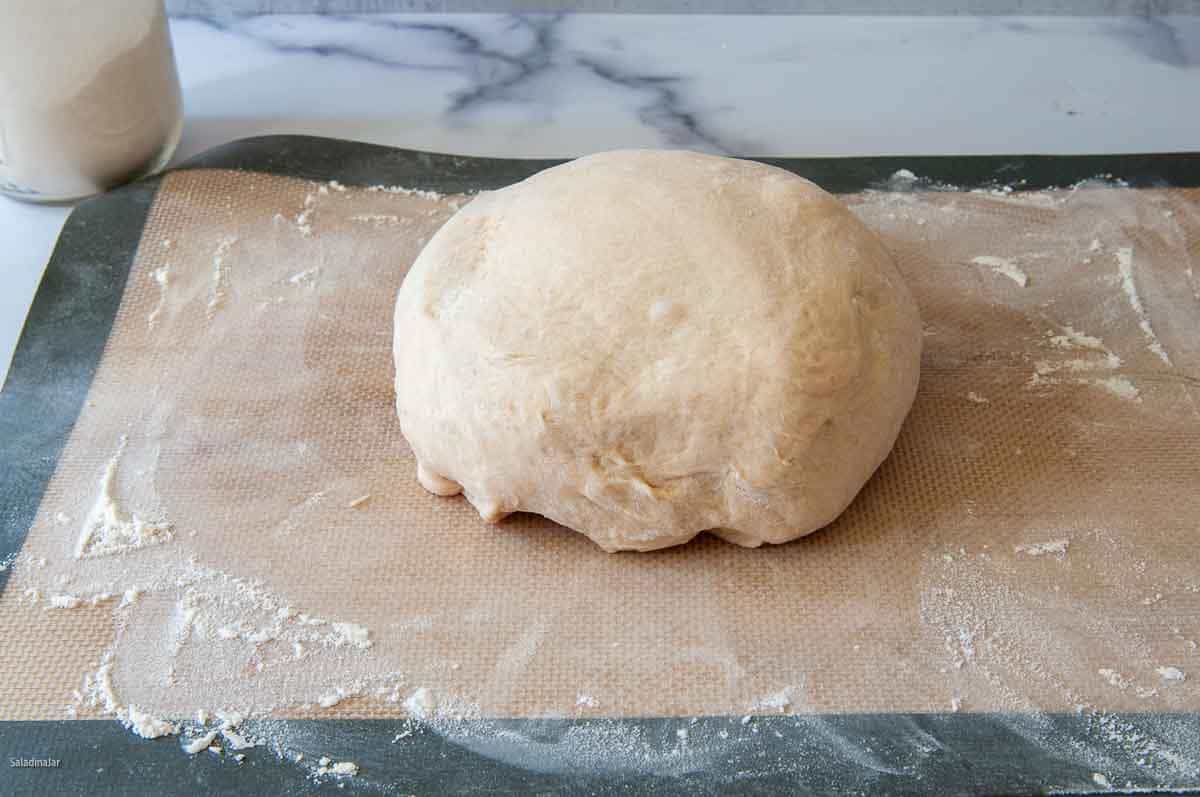
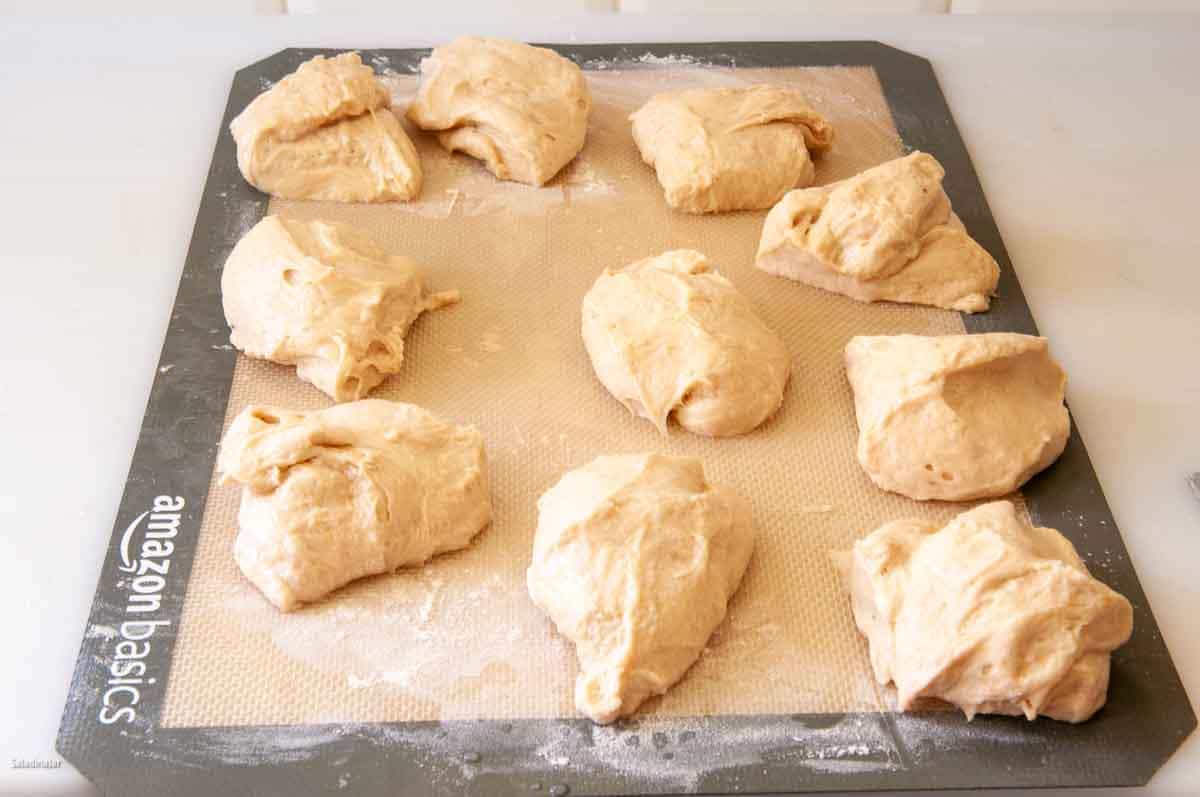
Preparing and Baking Honey Whole Wheat English Muffins
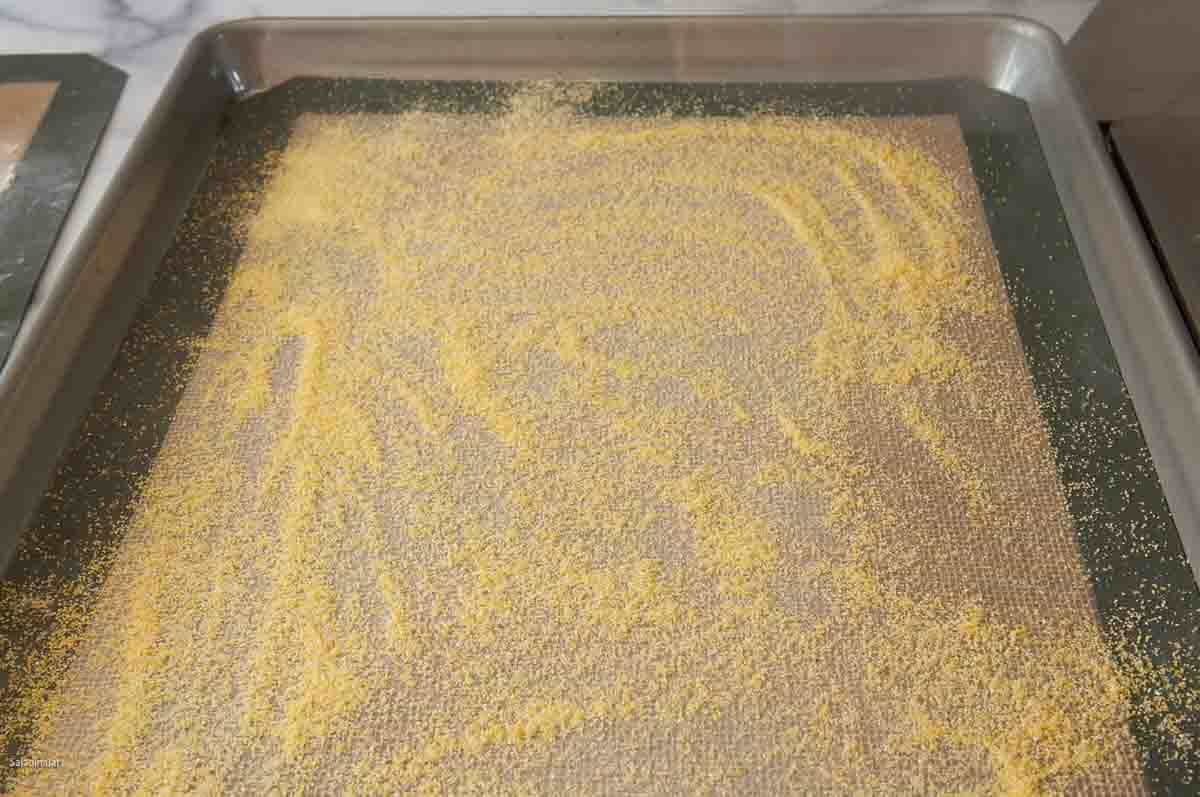
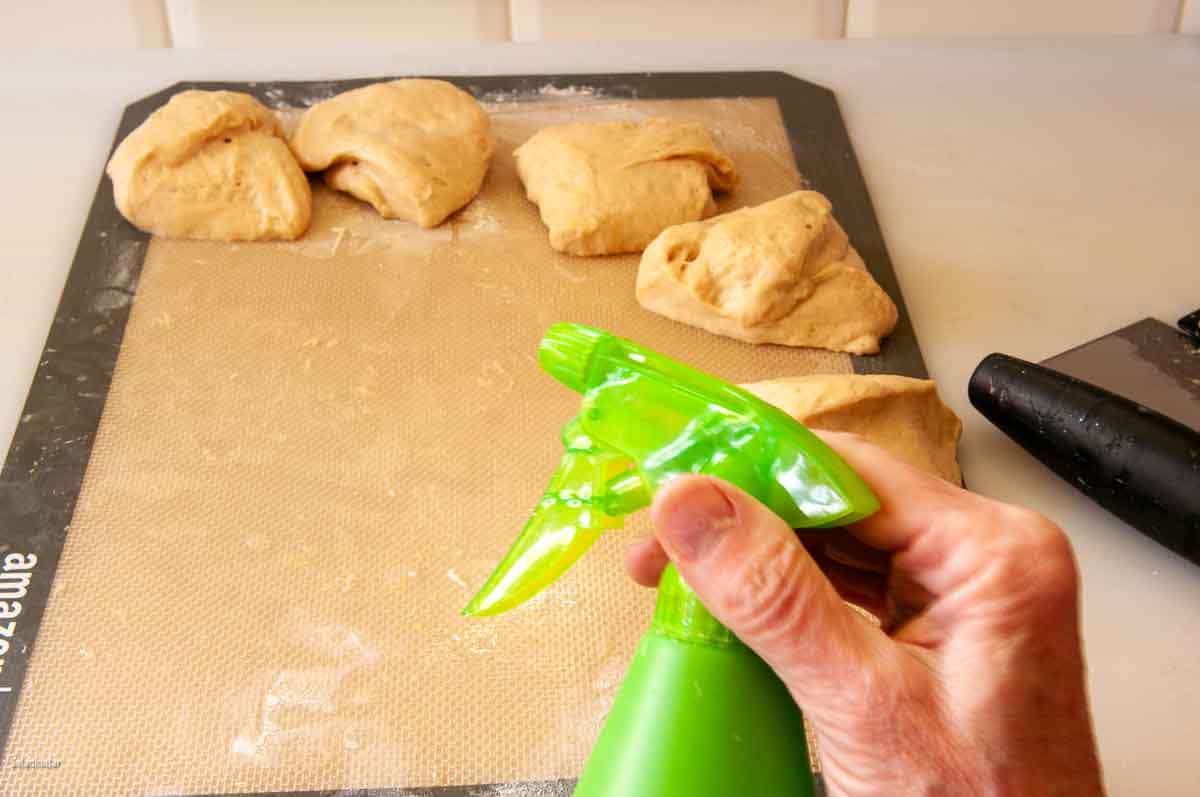
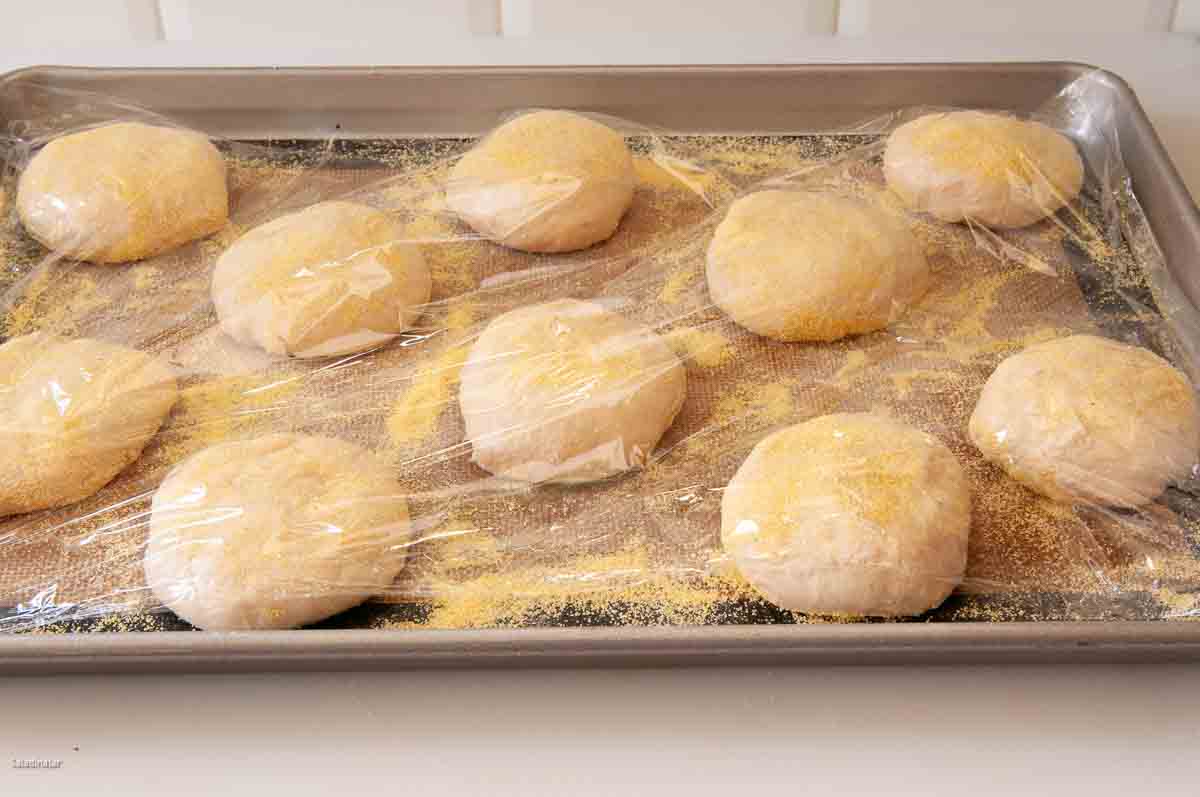
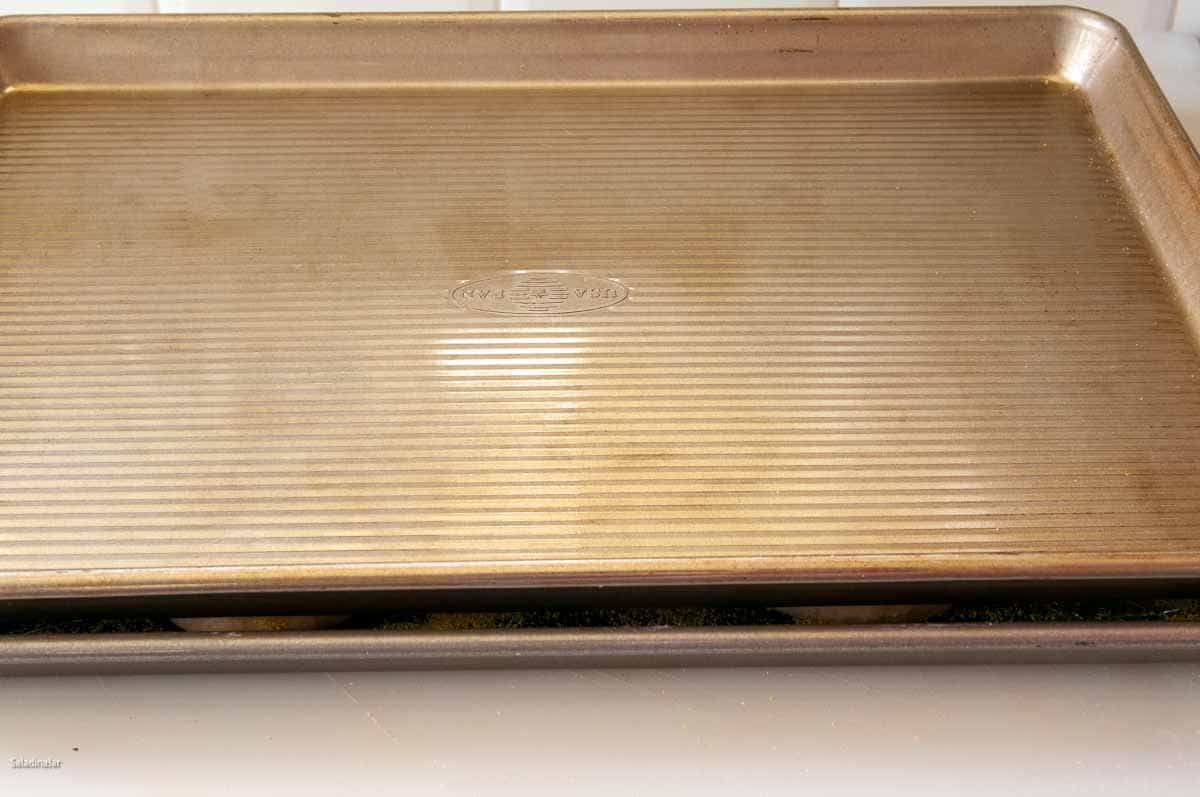
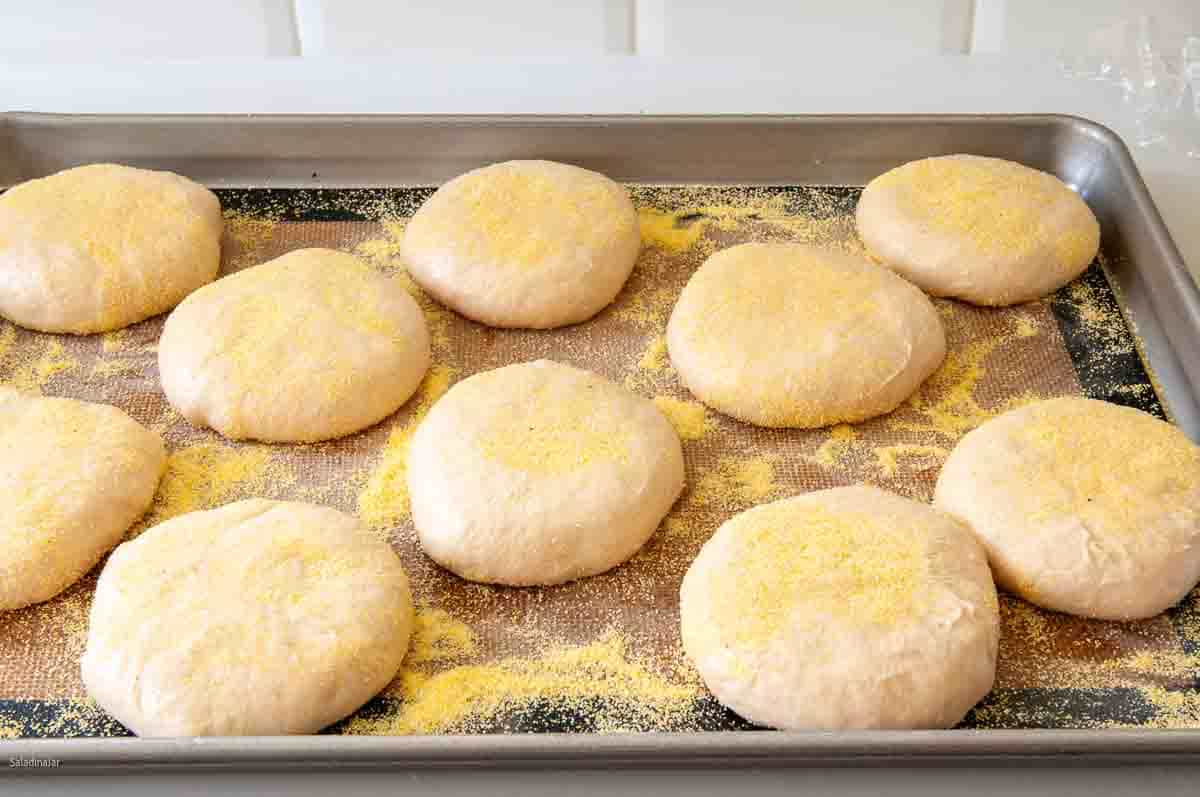
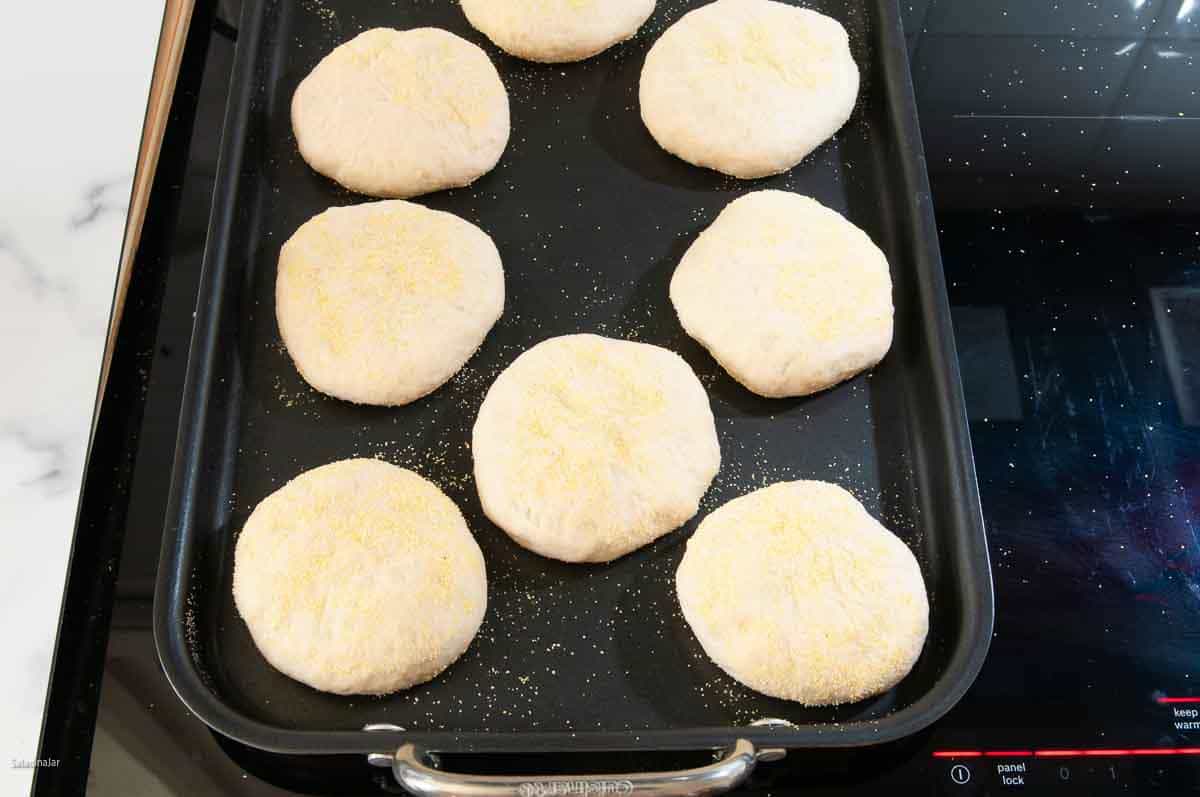
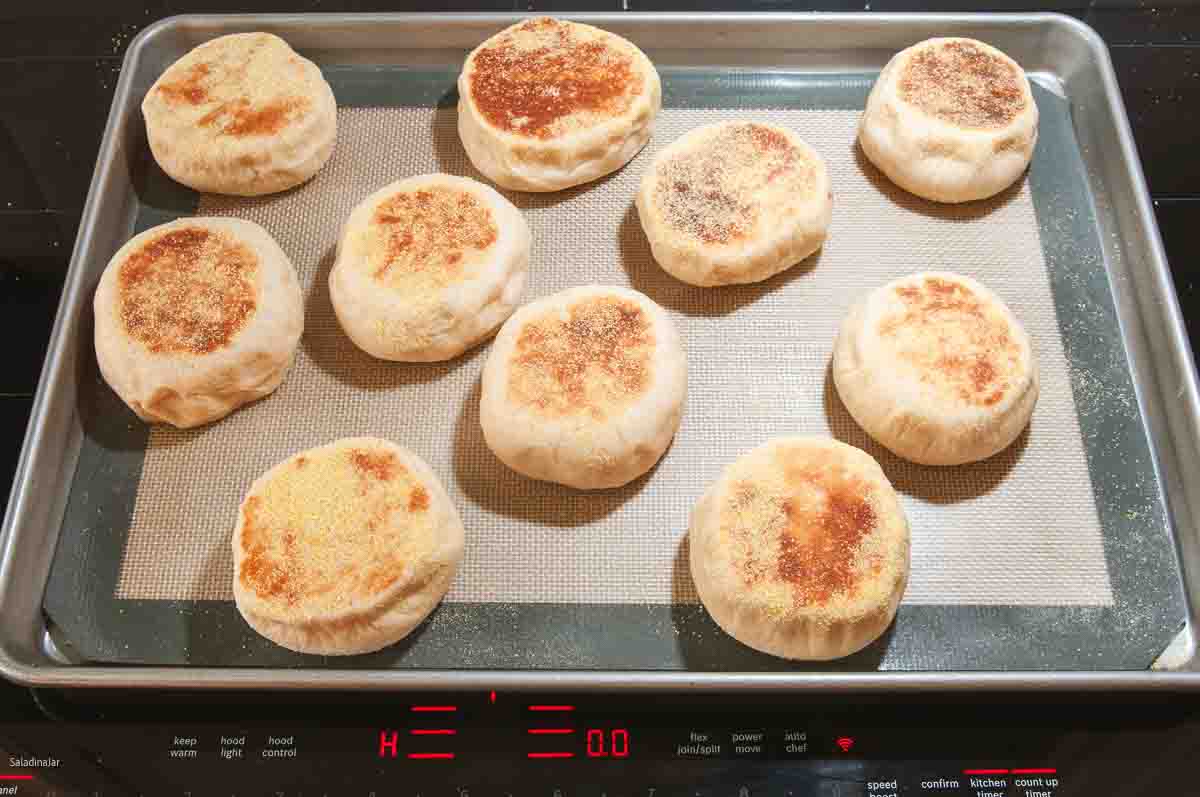
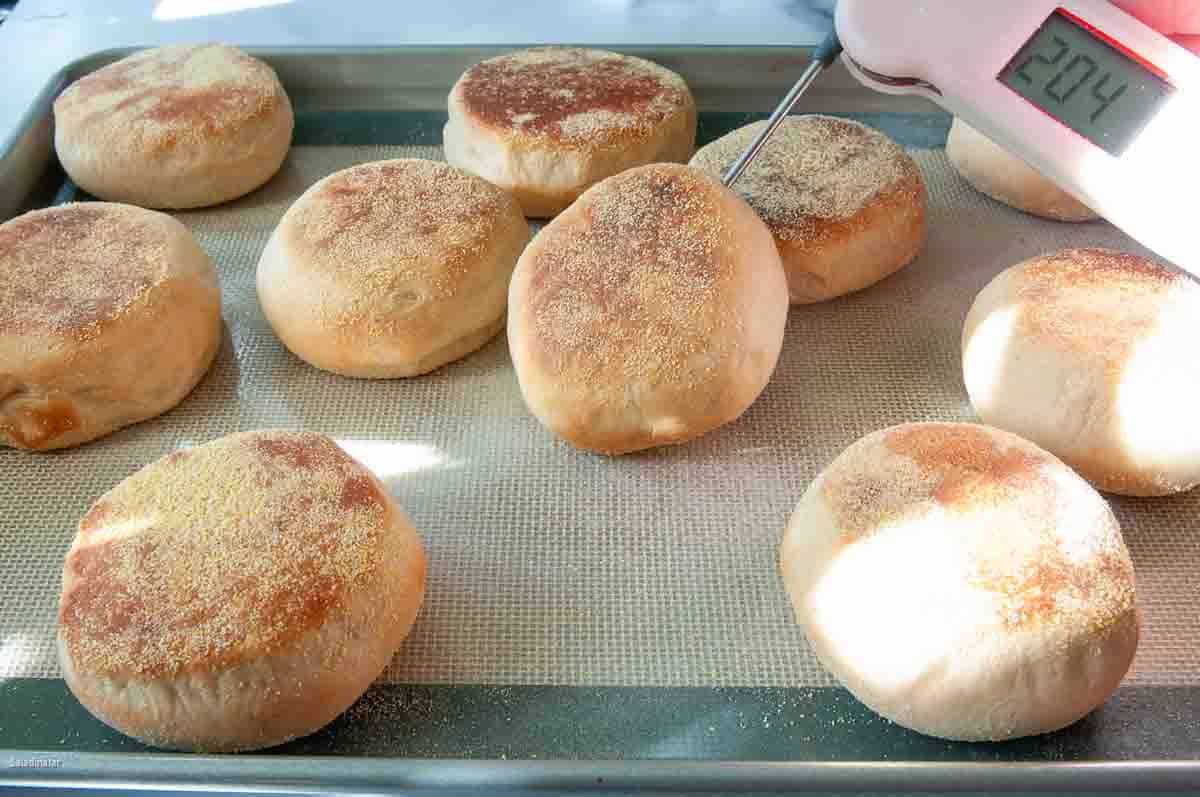
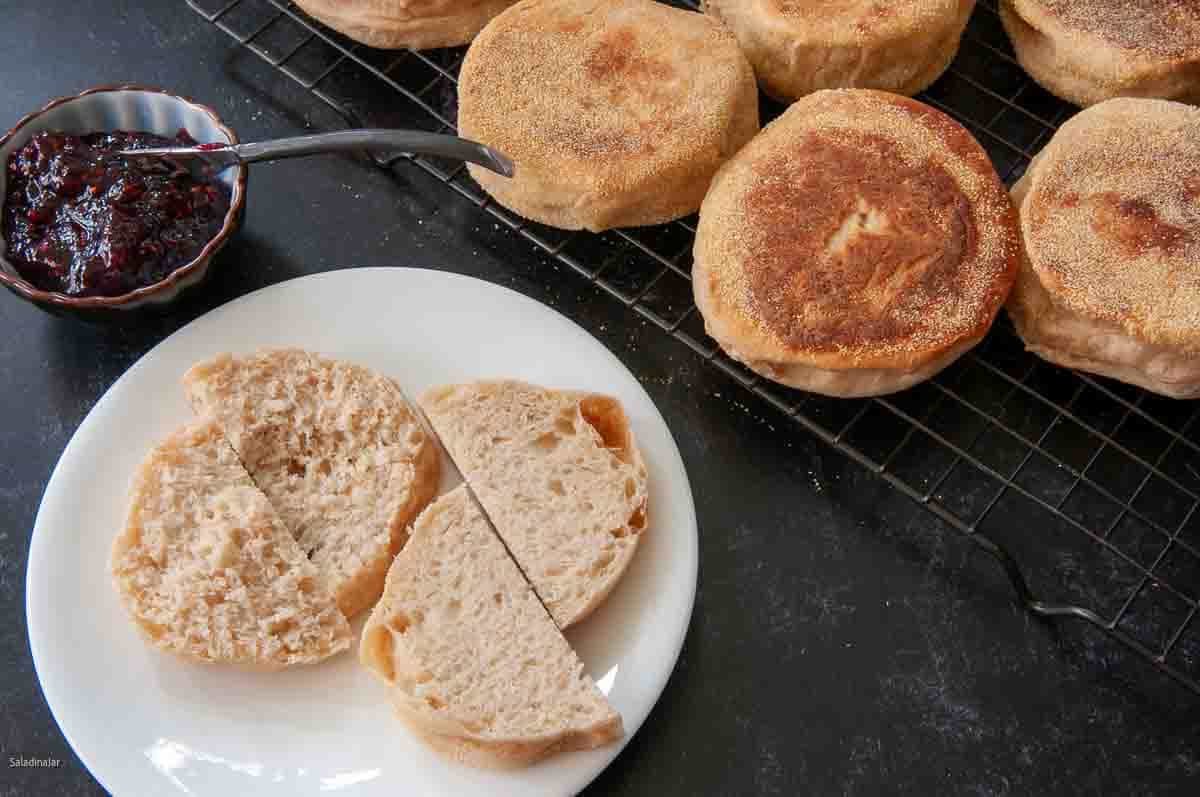
To toast the muffins, instead of slicing them with a knife, use a fork to poke and pry them open around the edges. This creates a rough surface that becomes delightfully crunchy when toasted.
FAQ:
English muffins are good for 2-3 days. If you want to keep them longer, double-wrap and freeze. Use within one month.
Use water on your hands to keep the dough from sticking. I learned this trick from making sourdough bread. It also works with dough like brioche and ciabatta. You could add more flour, but it will make your muffins heavier.
Another tip: Whole wheat flour absorbs liquid slowly, so try mixing the dough for one minute in your bread machine, then interrupt or stop the bread machine and let the dough rest for 30 minutes. Then, restart or resume the DOUGH cycle. This may make the dough easier to handle.
I have a reader who always does this, but I don’t have much luck with it. My muffins end up doughy on the inside. I prefer browning English muffins on the stove and baking them to ensure they are baked through. I always check the internal temperature with a quick-read thermometer (paid link) to make sure.

Bread Machine Honey Whole Wheat English Muffin Recipe
Rate this recipe
(5 stars if you loved it)
Video
Ingredients
- 1⅓ cup (295 g) milk (11 ounces)
- 2 Tablespoons (42 g) honey
- 1¼ teaspoon sea or table salt
- 1 Tablespoon unsalted butter, chopped
- 1 cup (113 g) white whole wheat flour (or whole wheat flour)
- 2 cups (225 g) all-purpose unbleached flour (organic is nice, if you have it)
- 2 teaspoons instant yeast
Instructions
Dough
- Add 1⅓ cup (295 g) milk (11 ounces) , 2 Tablespoons (42 g) honey, 1¼ teaspoon sea or table salt, 1 Tablespoon unsalted butter, chopped, 1 cup (113 g) white whole wheat flour, 2 cups (225 g) all-purpose unbleached flour, and 2 teaspoons instant yeast to the bread machine pan in the order listed. Select the DOUGH cycle and press START.
- Within the first minute, open the lid and check the dough to ensure the paddles are installed correctly and the dough is starting to clump.
- Check the dough again in the last five minutes of the kneading phase. It should be somewhat sticky, sticking to the sides and then pulling away, with some dough still present under the paddles. If the dough is impossibly sticky, add one tablespoon of flour, allowing time for the flour to assimilate before adding more. If the dough is too dry and bouncing off the walls, add water one tablespoon at a time, allowing time for the water to assimilate before adding more. Read more about this trick that experienced breadmakers use to make good bread.If you can manage the stickier dough (use water on your hands), the buns will have bigger holes and crevices inside to hold the butter after they are split and toasted.
- Leave the dough in the bread machine until the DOUGH cycle finishes.
- At the end of the DOUGH cycle, transfer the dough to a lightly floured surface, gently press down the dough to compress the bubbles, and form into a smooth ball. Cover with a tea towel and let it relax for 10 minutes.
- While the dough relaxes, cover a baking sheet with parchment paper or a silicone mat, then sprinkle with yellow cornmeal or semolina flour.
- Back to the dough: Divide the dough into ten equal pieces. Shape each piece of dough into a round ball by pinching the top with your fingers and pulling the dough from the bottom back up to the top to make a smooth ball. (See the video–a picture is worth a thousand words.)
- Place the balls onto your prepared baking sheet. Flatten each roll to about ¾-inch thickness, flipping each dough ball to cover it with cornmeal on both sides. Cover the entire tray with plastic wrap.
- Finally, lay another baking sheet on top of the covered rolls (see the process pictures above). The weight of the baking sheet will allow the rolls to proof without creating a dome or ball shape.
- Let the buns rise until they almost double in size. This usually takes an hour at my house, but your timing may differ. Look at the uncooked muffins, not the clock.
- Preheat a conventional oven to 375˚F (190˚C).
- Preheat a non-stick griddle or large skillet over medium-high heat on your stove. Brown the muffins for two minutes on each side, moving them around as they cook so they brown evenly. When you have a full tray of muffins that have been browned on both sides, bake them in a preheated oven for 8 minutes or until the internal temperature reaches 205-210˚F (96-98˚C).
- Transfer the baked muffins to a cooling rack. Split with a fork and toast after they are cool.
Notes
- Add the ingredients to the bowl in the specified order in a heavy-duty stand mixer.
- Begin mixing on low speed until all the ingredients are moistened.
- Switch to a dough hook attachment and increase the speed to 2 or 3.
- Continue beating/kneading until the dough becomes smooth and elastic, typically about 5-10 minutes.
- Cover the dough and let it rise in a warm place.
- Once risen, gently deflate the dough and shape it as the recipe directs.
Equipment
Nutrition
All images and text ©️ Paula Rhodes for Salad in a Jar.com

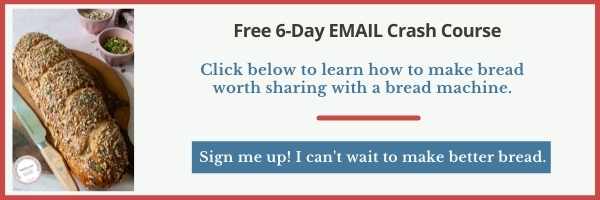
Paula Rhodes, owner
As a retired home economist, I created Saladinajar.com to share my belief that you don’t have to be a chef to find joy in creating homemade food worth sharing. Bread machines (used in an unconventional way), homemade yogurt, and quick microwave recipes are my specialty.